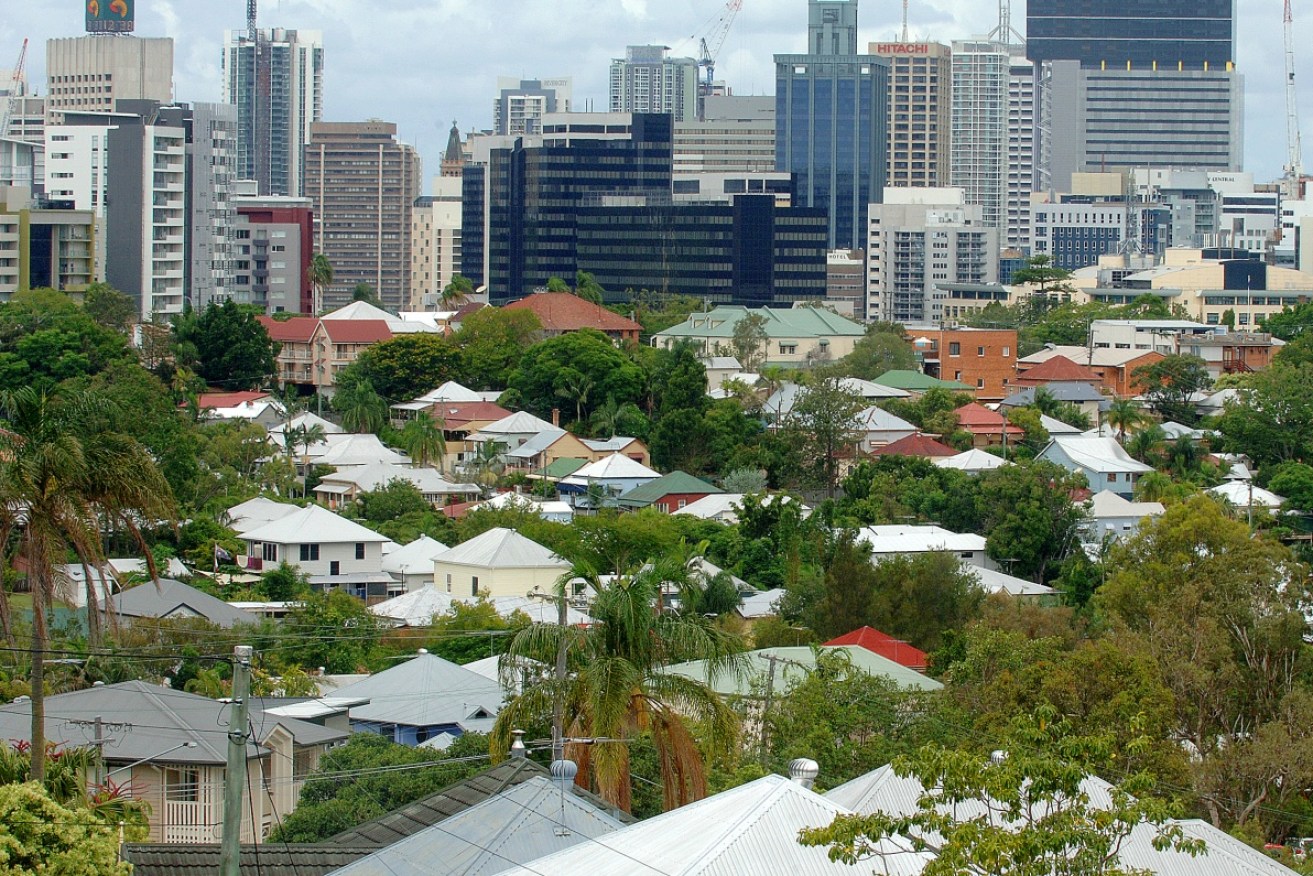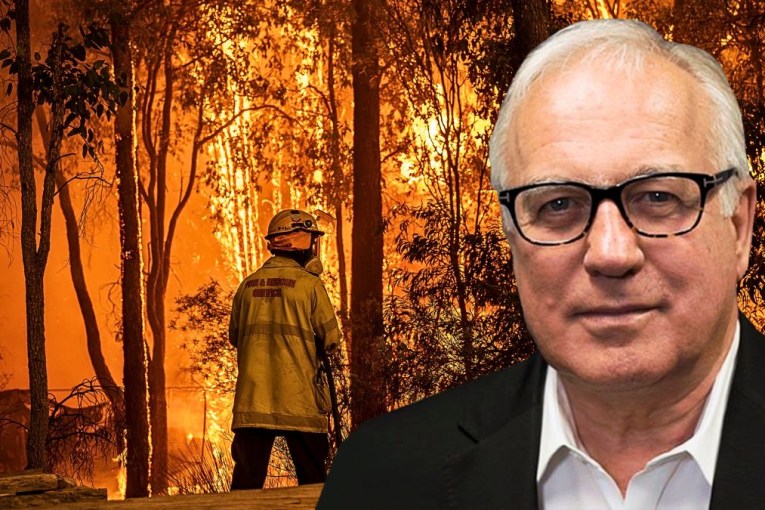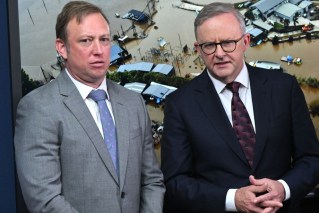And so endeth the Year of Falls … none disastrous


The message to remain calm is being backed by Australia’s Council of Finical Regulators. Photo: Getty Photo: AAP
Some years roar ahead, some plod along and, just occasionally, a year will be remembered for falls. In the case of 2018, the falls were so broad in nature, it’s almost been the year of going backwards.
If you maintain a little perspective on matters, none of the falls has been disastrous – well, not yet. What’s unusual is that markets, institutions and individuals are tumbling just about everywhere you look.
The stock market, Australian men’s cricket, key Australian housing markets, Australian rugby, the Liberal and National parties, the Aussie dollar, new vehicle sales, real wages, permanent immigration visas, local business confidence, commodity prices, unemployment, banks’ reputations, American politics, British politics, European politics, Chinese politics – pretty much all politics – they’re all falling into 2019.
And you can’t forget cryptocurrencies when thinking of plunges. The Bitcoin thingy – a bubble designed to burst – seems to be heading the way of Australia’s energy policy: Something that has fallen so far, we don’t have one.
Sure, some things are managing to rise: Global temperatures, private school fees, private health insurance premiums, inbound tourism, Jacinda Ardern, book sales, employment growth, the South Australian Liberal Party and Australian women’s sport. That’s about it.
“What about Daniel Andrews’ Victorian Labor government?” some might ask. “They won the election and increased their numbers.”
Yeah, nah. The federal and state Liberal parties imploded. Mr Andrews only had to stand still to look as if he was rising. His opposition was so bad, they actually thought killing people would win them votes. We’re not the Philippines.
Headline writers love falls – they’re much more attention-grabbing than steady rises. Think of all those billions wiped off the stock market when you never hear about billions being wiped on.
But the danger of so many falling/plunging/diving/collapsing/ tumbling/cratering headlines is that the casual observer can lose perspective and become unhealthily pessimistic. For example, the Australian stock market.
It has not been a good year for the S&P/ASX 200. The index began the year at 6061, reached a high in August of 6352, but finished at 5654 – a loss of 6.7 per cent over the year and back where it was in 2008 before the GFC.
A year is a rather random measuring stick though.
What’s so special about 365 days? A trick of massaging figures is to pick whatever time frame suits your purpose. In March 2009, the ASX 200 was 3146. The index is up 80 per cent from there – but it’s also just where it was in 2008 before the GFC. Oh woe is us.
Not really – the ASX 200 is not the index that tells the Australian equities story.
To really judge our market, the accumulation index is what counts as it includes dividends to give an indication of total returns. The ASX 200 accumulation index started 2018 at 60,387 and finished on 58,793 – a fall of 2.6 per cent. Not so bad. Add in the value of franking credits for those dividends and it’s even less painful.
But to keep perspective on this lacklustre year, consider where the accumulation index was, say, five years ago: 43,283 – it has gained 36 per cent.
And when the ASX 200 was around 5600 in 2008, the accumulation index was around 34,500 – it has gained 70 per cent while the ASX 200 has been all over the place yet gone nowhere. So Australian equities having a ho-hum year once in a while is hardly earth-shattering.
Ditto the headline-grabbing Sydney and Melbourne housing prices. Sydney is down 10 per cent or so in 2018, but only after going through the roof in the few years before.
Over any sort of decent time frame, those fortunate enough to own Sydney housing have done quite nicely and now it’s becoming more affordable for those who haven’t.
It’s nonetheless depressing for people who bought at the top of this particular cycle. History says Sydney’s froth tends to be blown off, prices eventually stabilise and then prove to be a reliable source of long-term, tax-efficient asset growth.
For owner-occupiers, there’s still the security of ownership and the forced saving involved in servicing a mortgage. And, eventually, most of us will need to own a home to be able to sell it to afford good aged care.
For investors, hey, it’s called risk/reward. You pay your money and take your chances. Don’t go whingeing because you bought at the peak – you weren’t complaining when you bought at the cycle lows.
The Aussie dollar? Yes, it started the year above 78 US cents, ran higher than 81 and is now approaching 70. That’s unfortunate for those lucky enough to be heading off for an overseas holiday, but it’s actually good for the nation. A cheaper dollar cushions us from lower commodity prices, makes our exports and services more desirable, and helps drive profits and employment growth. Again, no whingeing.
Australian politics? That, too, passes. The Coalition’s death wish is playing out. Malcolm Turnbull was a disappointment for the pragmatic centre of Australian politics – the people who aren’t blindly wedded to any ideology – but the Scott Morrison Stunt Show is making Turnbull look better all the time.
I’ve written before that I stumbled on an interesting balance on the night of the 2016 election. If you accept that Australia entered the modern era with the election of the Whitlam government in 1972, from ’72 to 2016 we’ve had roughly 22 years each of Labor and Liberal prime ministers.
One mob leans a little one way, the other mob leans a little the other way. When either side leans too much, the pragmatic centres brings it back again through the ballot box. According to all the polls, the next election will restore the balance. By 2022, it looks like we’ll have had 25 years of Labor and 25 years of Coalition governments since 1972.
And the end result of that remains a fantastic country. It’s not as good as it could be, not as good as it should be, but there are few equal and, for mine, none better.
Contrary to what the more obnoxious windbags pretend, our world doesn’t end when our governments change. The Coalition has descended into an embarrassing rabble, still involved in a civil war, still without a credible vision, still without leadership. The other mob will have a go next and we’ll all survive the Coalition’s fall.
We have genuine challenges and need to be much smarter about how we try to meet them. With all our good fortune, we owe it to our present and future community to do better, to be less selfish in our policy goals and strive instead for what should be best for the nation.
That would be a good New Year’s resolution.
As for the cricket and the Wallabies – buggered if I know.








